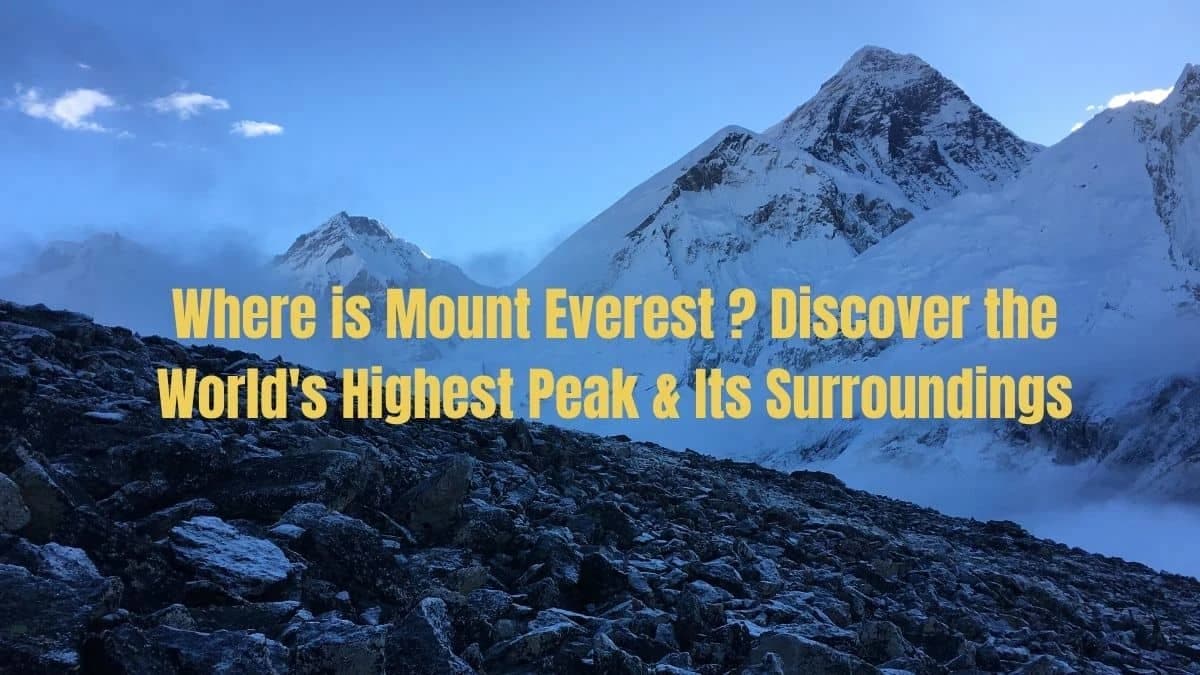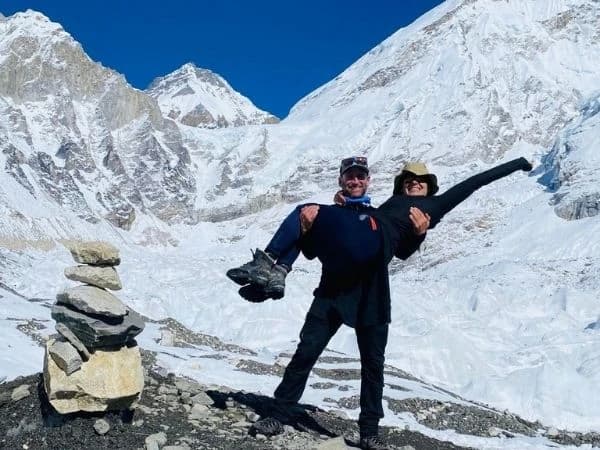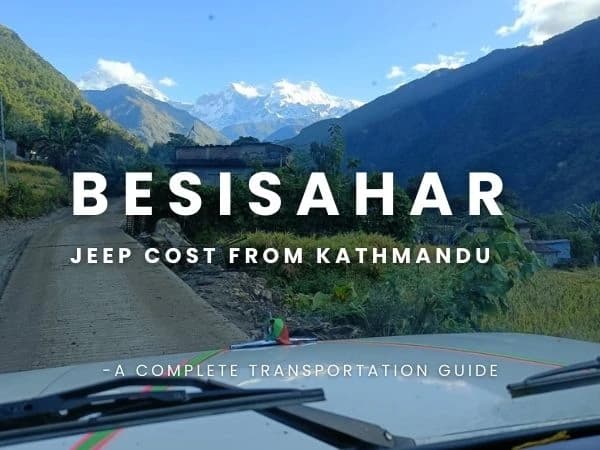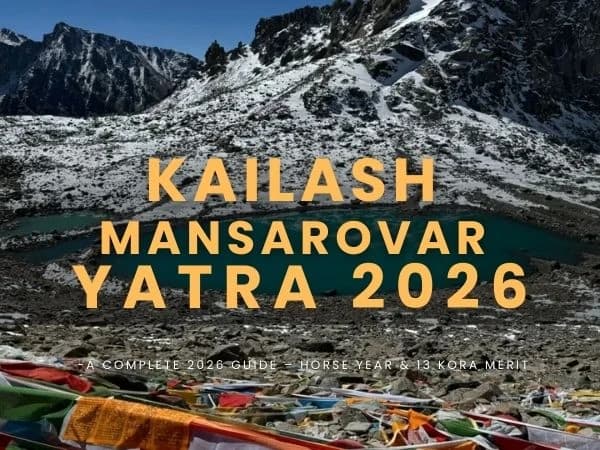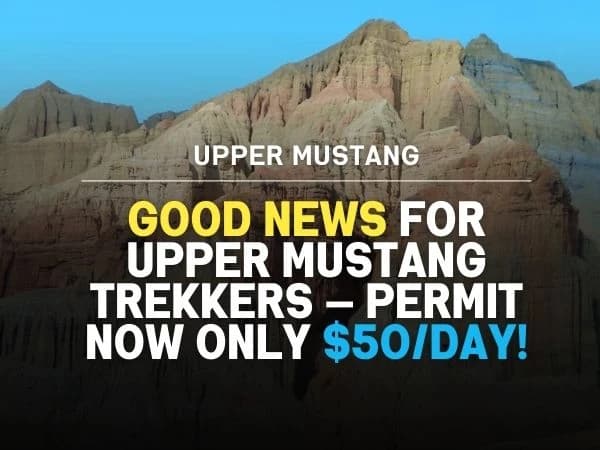Rising to a immense altitude of 8,848 meters, Mount Everest commands the skyline of the planet, enticing climbers and seekers of wild beauty from every nooks and corners of the world. The peak also known as 'Sagarmatha' in Nepali is cradled by the Himalayan chain, which forms the raw and huge frontier between Nepal and the Tibet Autonomous Region of China.
The significance of Mount Everest is not simply to be the tallest mountain of the world but it is also the place with mesmerizing beauty, thrilling adventure, and stories full of risks, perseverance, endurance, sorrow and victory.
Every single part of Everest feels alive, from the shiny glaciers and slippery cliffs to the busy base camps where climbers exchange food and hopes. The famous and sacred monasteries like Tengboche monastery provides the visitors with peace and spiritual strength. This helps them to build strong mindset and courage they need to face Everest.
Wonder where the Everest is? In this blog, you'll learn exactly where the Everest is and also learn about the nature, flora and fauna, lifestyle of the people living there. So, whether you are expert mountain climber, trekker or someone just curious to learn about the highest mountain of the world, this article will help you expand your knowledge.
Where Exactly Is Mount Everest? Map & Borders Explained
Mount Everest's Position on the Map
If you’re wondering where Mount Everest is, it lies at the coordinates 27.9881° N and 86.9250° E, at the border of Nepal and Tibet. This tallest mountain with the height of 8,848m, it is situated at the border between Tibet Autonomous Region of China and Nepal. It is also considered as gem of Himalayas.
South and North Faces: Nepal and Tibet
Due to the exact position of the Everest, it has become one of the interesting mountains that has been studied in the world. South of the Everest is from Nepal whereas the north is accessible from Tibet. This reason provides climbers with two unique routes and someone seeking adventure. Despite the two routes, summit of Everest most commonly is achieved starting from Everest Base Camp in Nepal.
The Himalayas and Geological Formation
The Himalayas are a group of very tall mountains found in five countries: Bhutan, India, Nepal, China and Pakistan. These mountains include some of the highest in the world. Mount Everest is the tallest of them all.
The Himalayas were formed about 50 million years ago when two large parts of the Earth's surface pushed into each other. This movement is still happening today. It helps make Everest so tall and gives the mountains their special shape.
Everest within Sagarmatha National Park
From Nepal's side Everest/Sagarmatha is situated in Sagarmatha National Park, the national park enlisted in UNESCO World Heritage Site from 1979. This national park covering 1,148 sq.km lies in Solukhumbu district, Koshi Province which is eastern part of Nepal. Despite the high altitude, it is rich in biodiversity, and is home to Sherpa and TIbetan community that has adapted to rough climatic conditions
The Borders: Nepal and Tibet
Mountain Everest lies on the border of Nepal and Tibet, both countries are proud of it. It has different names in countries, it is known as 'Sagarmatha' in Nepal which signifies "Forehead of the Sky" in Sanskrit. Also, in Tibet its name is 'Chomolungma' which means "Mother Goddess of the Universe". Both the names represent spiritual importance of the mountain.
To reach Everest (from Nepal's side), your journey will begin from Kathmandu then flight to Lukla airport and enter the Everest Region Nevertheless, if you want to go from Tibet side your journey will begin from Lhasa, passing through Shigatse and finally reach north EBC.
Each side has different route and has different views, however both takes you to world's highest peak.
How to Reach Mount Everest Base Camp
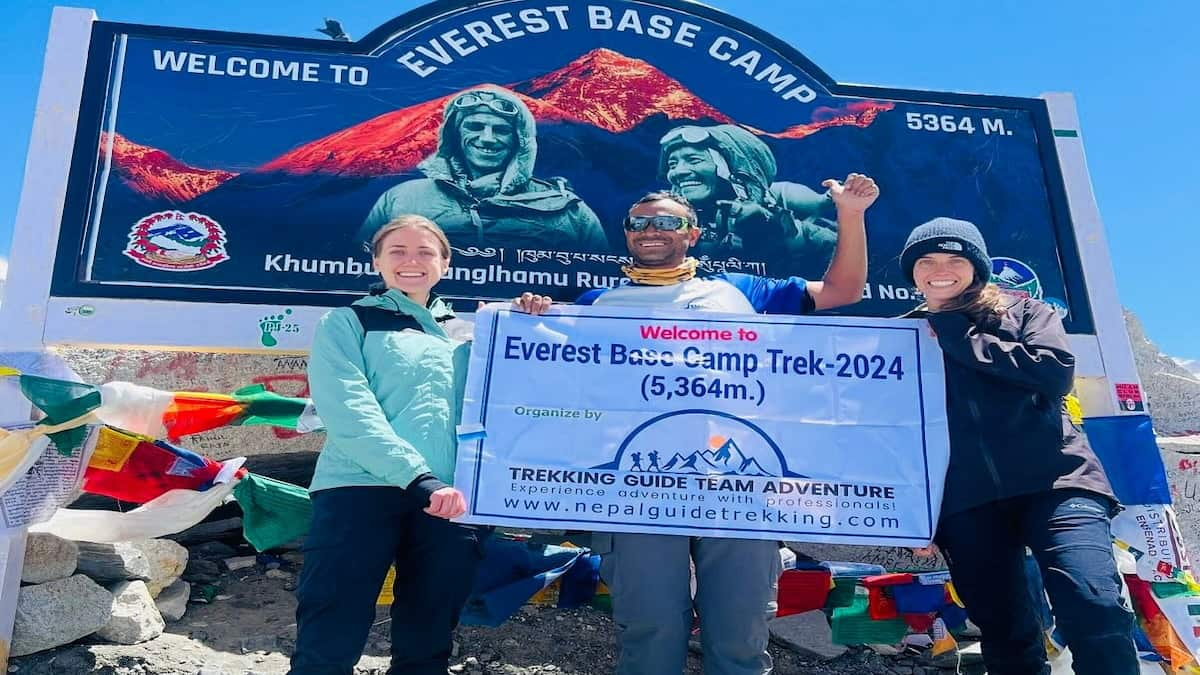
Reaching Everest Base Camp is a dream for many trekkers and adventure lovers. As it can be accessible from two countries, there are two main routes as well.
The Nepal Route (South Base Camp)
Normally, while aiming for south everest base camp, you will have to do it from Kathmandu (Nepal's side). You will fly to Lukla and your journey starts there as soon as you land. The trail goes by passing through unrealistically beautiful such as Phakding, Namche, Tengboche, Dibuche , Dingboche and so on. During the whole trek, you will have to stay in tea houses which offers the local culture experience while enjoying the views of snowy peaks.
Trek Duration and Experience
The trek to South Base Camp usually takes around 12-14 days. During the trek, you will have few days in between to rest, and acclimatize properly so that your body adapts to the increasing altitude. You will ascend through rhododendron forests, cross the thrilling bridges like the famous Hil;ary bridge, and walk alongside the powerful Dudhkoshi River.
Most importantly, you will see Kusum Kanguru and Kongde mountain just starting from Lukla. As you ascend higher, major peaks like Thamserku, Ama Dablam, Lhotse, Island Peak, Pumori, Nuptse, Lingtren, Khumbutse, Changtse, and finally the Everest, along with the Khumbu icefall at the base camp of height 5364 meters.
The Tibet Route (North Base Camp)
Although less traveled, the trek from Tibet is equally spectacular. From Lhasa, it commences with a drive through Shigatse and Gyantse villages. Before reaching the North Base Camp at 5,150 meters, trekkers stop by the world's highest monastery, Rongbuk Monastery. This route offers a distinctive perspective of Everest and accentuates the Tibetan Plateau's expansive, unspoiled terrain.
History of Mount Everest
The Great Trigonometrical Survey of British India in the mid-19th Century discovered Mount Everest. It was initially named Peak XV until later being called Mount Everest, for Sir George Everest. In 1856, It was declared the world’s highest peak. The mountain gained even more fame in 1953 after the first confirmed summit climbers, Sir Edmund Hillary and Tenzing Norgay Sherpa. Their climb turned Everest into a world-renowned icon for exploration and the power of humanity.
The Significance of Mount Everest in Geography
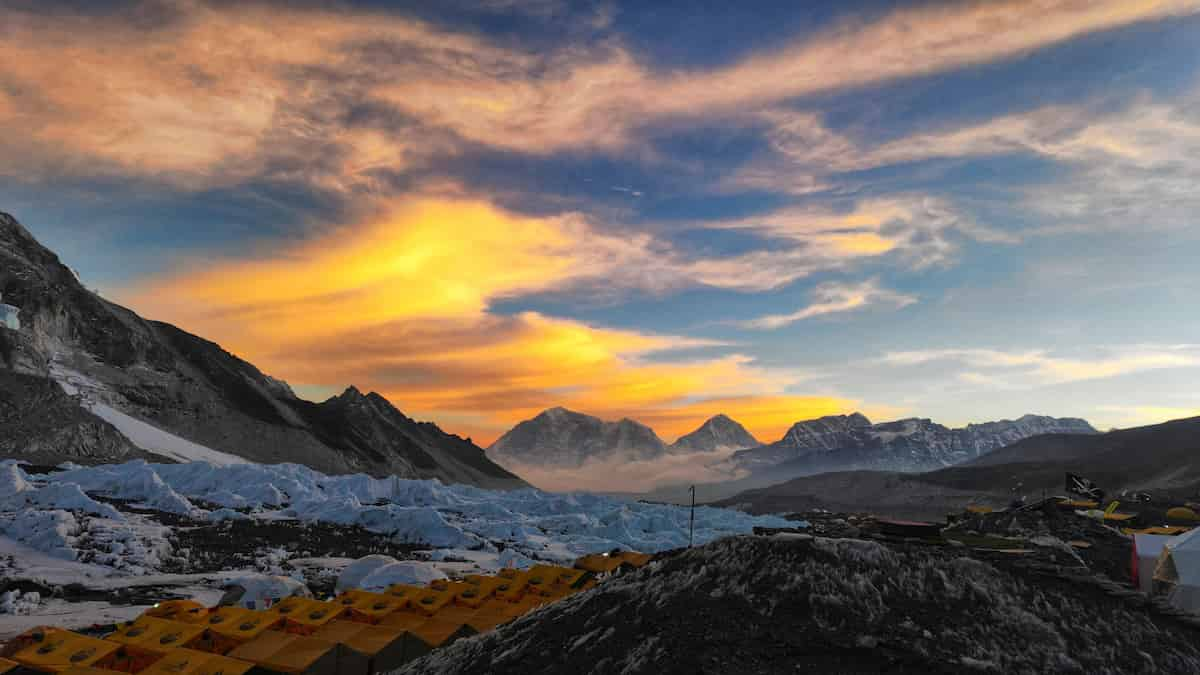
1. Mount Everest: A Geographical Marvel
Mount Everest rises to 8,848 meters, and its height marks the planet's loftiest threshold, providing a standard point from which all other elevations are measured. This towering mass has drawn the unbroken curiosity of geographers, cartographers, and adventurers for centuries, to the point that it has become more than a peak; it has become a shorthand for the most extreme of Earth’s landscapes.
2. A Living Laboratory of Tectonic Activity
The mountain is a product of the relentless collisions between the Indian and Eurasian plates, a clash that still drives Everest upward, incrementally but persistently, year after year. Geologists track the fine-scale motion of these plates to reveal the long-term evolution of mountain ranges, thereby sharpening our picture of the planet’s restless crust.
3. Everest’s Role in Climate and Water Systems
The mountain's significance extends beyond geology. It serves as a climatic sentry for South Asia, directing the powerful summer monsoons and guarding the northern frontiers from the dry winds of the Tibetan Plateau. Its glaciers, perched on its flanks, are the ice rivers that nourish the subcontinent’s great rivers: the Ganges, the Brahmaputra, and the Indus. These rivers, in turn, irrigate fields, turn turbines, and quench the thirst of hundreds of millions. Everest, towering and silent, mediates between rock, weather, and life itself.
Climate and Weather Conditions at Everest
The majority of climbers attempt to conquer Everest in late September or early October, or in April or May. Climbing is generally safer during these months because of the generally calmer winds and clearer skies. However, Everest's weather is not always predictable and is subjected to sudden changes. A snowstorm can strike at any time, even with accurate forecasts. The air becomes extremely cold above 8,000 meters, with temperatures as low as -60°C and winds exceeding 160 km/h. Climbers must be prepared for anything like that.
During monsoon season (June to August), the weather is mostly cloudy and rainy. This makes the climbing trail less visible, with very low visibility. On top of that, there will be greater chances of avalanches, which makes it even more risky. So, the season is not recommended even for the expert mountaineers.
Flora and Fauna Surrounding Mount Everest
Everest Region is reach in biodiversity despite it's harsh climate. This beauty is protected by Sagarmatha National Park mostly covering the southern part of Everest.
From lower altitude region to upper high altitude region, the vegetation changes significantly. Lower altitude is rich in rhododendron, pine and fir while as the altitude increases, the vegetation becomes thin and shrubs and mosses are only found. During Spring you will be able to witness the colourful trails as rhododendron blooms and snow-covered mountain shining brightly.
Likewise, this region is also home to rare and unique wildlife. They are quite well adapted in the higher altitude and thin air by developing special characteristics like thick fur, enough energy use to survive and thrive in harsh climatic conditions.
Some of the mammals are:
- Snow leopard (rare and elusive)
- Himalayan tahr
- Musk deer
Additionally, if you are bird enthusiast you will have opportunity to explore birds like Lophophorus/Danphe(national bird of Nepal), blood pheasant, red-billed chough and so on.
Sagarmatha National Park is a UNESCO World Heritage Site, which is recognized for both its ecological importance and cultural value. The national park focuses on the conservation making efforts like:
- Protecting native species
- Preserving habitats
- Promoting sustainable tourism
Trekkers and climbers are encouraged to:
- Respect wildlife
- Minimize environmental impact
- Follow eco-friendly trekking practices
The Impact of Tourism on Mount Everest
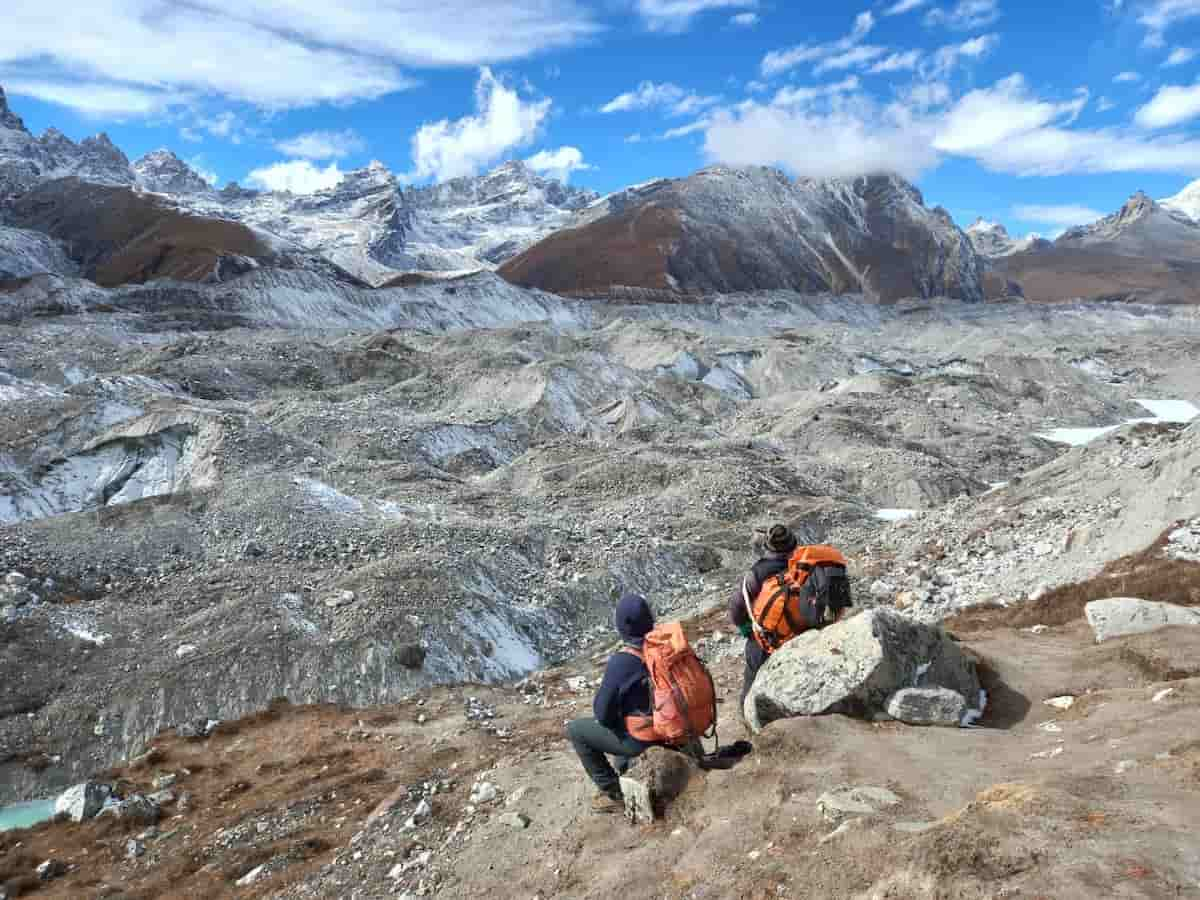
After the opening of Sagarmatha National Park in 1976 and increasing access of Lukla airport, Everest Region's economy started to rely on Tourism. Today, it has become the main source income which provides support to local guides, porters and tea houses owners as thousands of trekkers and climbers visit there each year.
However, as the tourism goes up, locals have raise concerns about waste management, overcrowding, and environmental degradation on the surrounding trails and mountain itself. To be more specific, the death zone of Everest is full of waste materials, which has not been managed from years though Nepalese government and other local organizations claim to be promoting responsible tourism.
Climbing Mount Everest: Challenges and Considerations
Physical and Altitude Challenges
To climb the mountain, one must have very good physical strength and a powerful mentality. Extreme altitude and having only 1/3 the oxygen of sea level is a major challenge. Without the correct acclimatization, Everest climbers have a high risks of altitude sickness.
The Southeast Ridge Route
The steep climb of risky Khumbu Icefall and the steep Lhotse Face make the Everest climb very difficult from the southeastern ridge. Above the 8000-meter mark, the ‘death zone’ is the riskiest because of the altitude danger, low oxygen, and freezing temperatures.
Essential Gear and Support
To make the climb, one requires high altitude climbing gears, ice axes, oxygen and more. For guidance, security, and support, it is highly recommended to hire professional guides as many others mountaineers do.
The climb is of course risky, despite the fact Everest attract many climbers looking to test their own limits and conquer the highest peak in the world. If you prepare yourself well, have right equipment and expert support, the summit becomes achievable.
Conclusion: The Allure of the World's Highest Peak
Mount Everest continues capturing the imagination of countless men and women around the world risking their lives and wealth. Situated between Nepal and Tibet, is of awe-aspiring nature, vibrant culture, and a personal adventure. Everest is one journey worth making.
Climbing famous base camps, ancient monasteries, and serene valleys, one can find special charm in the hospitable Sherpa people. Their unyielding support enables climbers to push through their limits.
The adventure of climbing Everest is one of the most rewarding and challenging experiences of a lifetime. While it is the toughest adventure one can achieve, nature can be harsh to climbers with rugged weather, harsh air, and risky steeps. Everest is widely known most for the stories of bravery, and perseverance it motivates people to share. Lastly, it serves as a reminder of the impactful fury of nature and the people with immense courage it takes to reach the peak.


